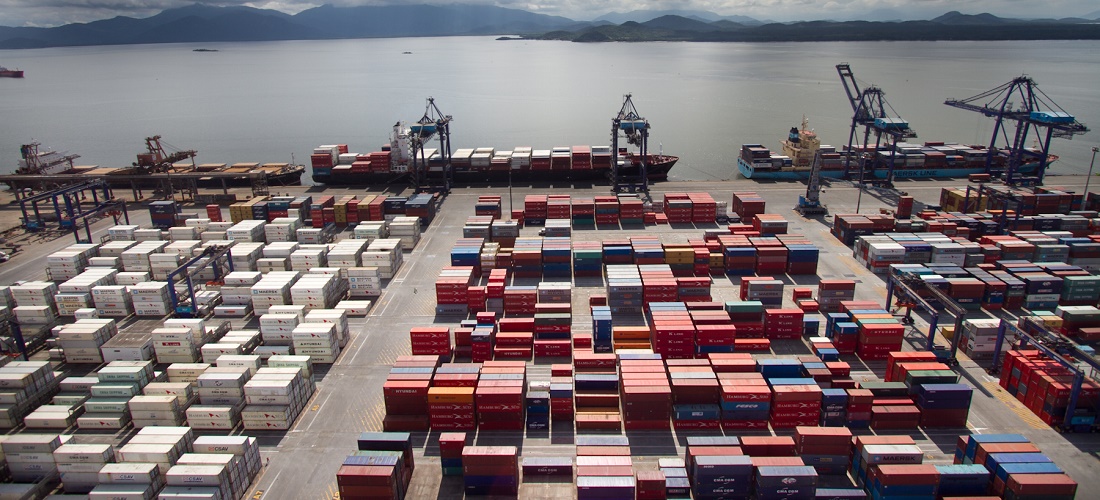
New TCP Berth to operate with 12.5 m draft
Jul, 05, 2019 Posted by datamarnewsWeek 201928
With the approval of the draft of 12.5 meters by the Maritime and Port Authorities, as well as the authorization of operation by the environmental agency licensor, IBAMA, the new mooring berth of TCP, company that manages the Container Terminal of Paranaguá, entered into operation on Sunday, June 30, with the berthing of the ship Maersk Londrina (229.90 meters). The release of berth 218, built from the expansion works of the Terminal, makes Paranaguá one of the first Brazilian ports to be prepared to serve the larger foreign trade ships.
Juarez Moraes e Silva, institutional director of TCP, emphasizes that the homologation of the new operational draft takes into account the Standards of Maritime Traffic and Permanence in the Ports of Paranaguá and Antonina. “This means that we obey all the operational constraints enabling us to start the operations of the new structure and integrating it into the existing structure,” he says.
The executive emphasizes that the liberalization was possible, thanks to the alignment between the authorities and port operators. “It is the result of a work of strategic planning and alignment among all the parties involved. As a result, TCP and, consequently, the Port of Paranaguá deliver even more operational capacity for users and shipowners. It is a berth able to operate, aside from containers, cargo project, general cargo, and vehicles when necessary,” he points out.
The following graph, based on data from Dataliner data, shows the sugar exports from that port between January 2015 and May 2019.
New Berth
 :
The president of the public company Portos do Paraná, Luiz Fernando Garcia, emphasizes that the release of the draft and the entry into operation of the new berth contributes to the Port and Terminal to meet market expectations, which should move the economy in Paraná. “The expansion of the draft has a direct impact on the terminal’s shipment capacity and reduces operating costs, ensuring greater competitiveness in the international market. With more loads moved, we have more business, more jobs generated, more income, and greater tax collection.”
The captain of the Ports of Paraná, Navy Captain Rogerio Antunes Machado, points out that the equalization process of the draft contributes to the safety of navigation in the region. “The equalization is conditioned to the efficiency of the nautical signals of the beacon buoys in the maneuvering area; the minimum visibility; and maintenance of the operational restrictions regarding the internal channels and berths to be operated. We hope that with these measures, we can contribute to the development of the State of Paraná by making the port of Paraná even more attractive for port operations.”
Renato Alves, a board member of the Praticagem de Paranaguá, says that operating ships in new berths is a challenge. “We welcome the development of the Paraná port complex, and we stand ready to carry out the task of providing quality safety in the traffic of the vessels that come to the Port,” he says.
“The draft for 12.5 meters immensely raises the standard of TCP’s berth 218; it is the maximum draft allowed in the Paranaguá canal. The new draft brings a lot of versatility in the new berth, being able to operate any ship, with the maximum possible draft,” he says.
Other interesting data to measure volumes moved by Paranaguá is exports of soybeans from January 2015 to May 2019. Check the following chart, based on data from Dataliner:
Enlargement
With the release of berth 218, the wharf passed from 879 meters to 1,099 meters in length, totaling four berths. “This means that the Terminal offers importers and exporters more flexibility in their operations, allowing ships out of the window to have adjustments in the delay, following the schedule of mooring in other ports on the Brazilian coast,” Moraes and Silva emphasizes, which complements that the terminal will be able to operate new services that are not yet available in Paranaguá, such as those for the East Coast and cabotage.
The Dataliner chart below shows the exports and imports of containers via Port of Paranaguá:
-
Economy
Jun, 16, 2019
0
Agriculture exports generate 1.7% less in May YoY
-
Grains
May, 16, 2019
0
China’s Brazilian soybean share falls to 72.8%
-
Grains
Jul, 22, 2019
0
Brazilian soybeans face low protein content
-
Datamar EN
Jun, 18, 2019
0
DataLiner released early with reduced time lag


